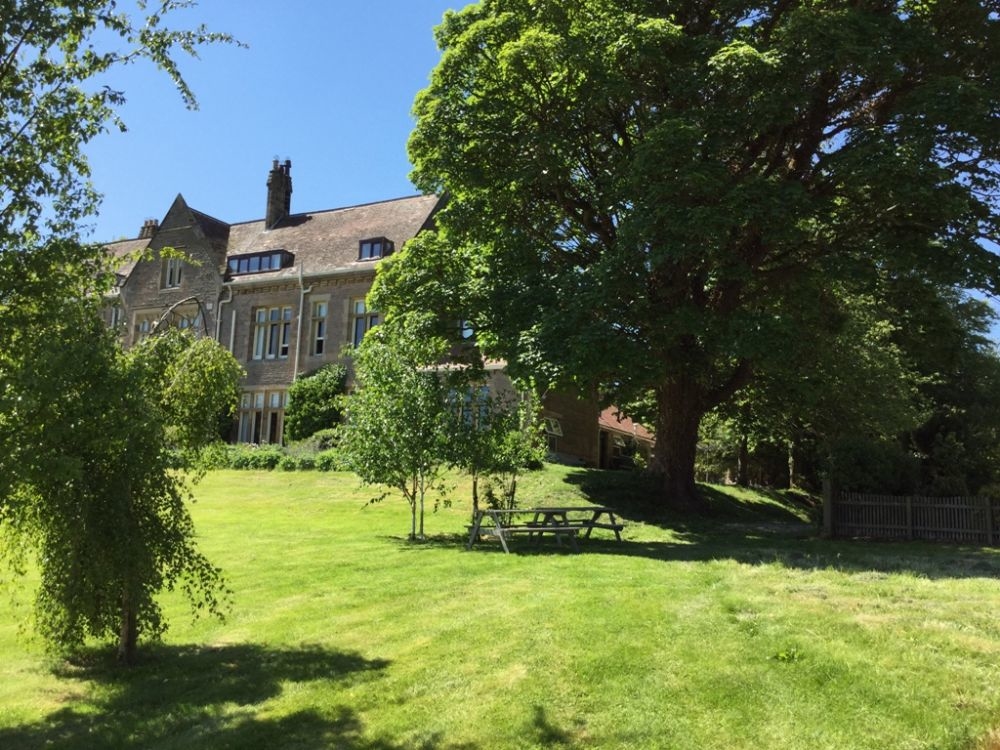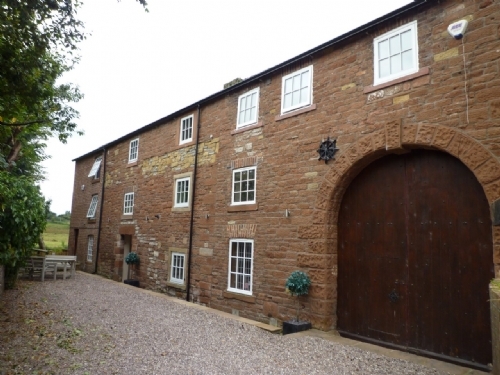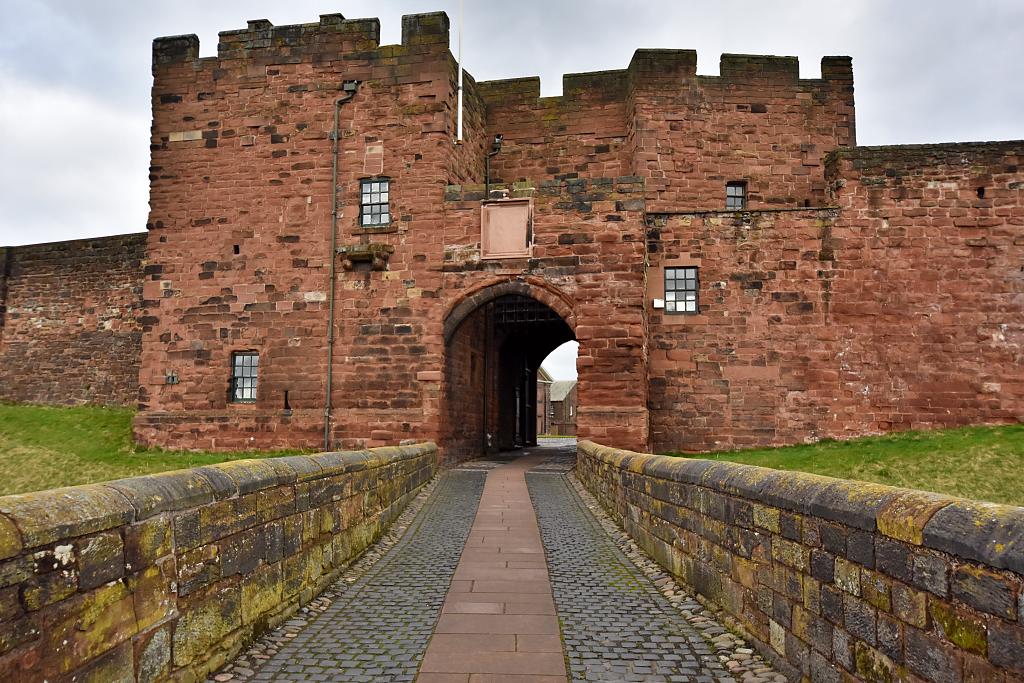Carlisle Cathedral
The Cathedral Church of the Holy and Undivided Trinity
Built from beautiful red sandstone, Carlisle Cathedral stands majestically in the centre of the city of Carlisle. A place of worship for nearly 900 years, it began life as an Augustinian Priory and became a cathedral in 1133. It's the second smallest early cathedral in England. Surrounding the cathedral are beautiful grounds, which make a nice place to sit and relax in the warm sunshine.
The cathedral precinct is home to a number of Chapter and staff and also contains remains from the Augustine Priory. Parts of the chapter house where the canons would have discussed daily business still stand, as does the fratary, on the top floor of which food was served.
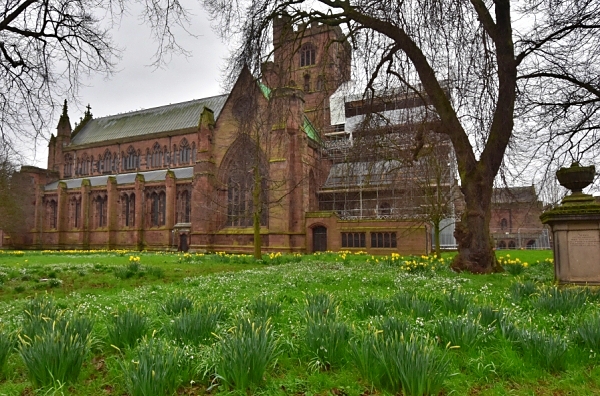 Carlisle Cathedral in Springtime © essentially-england.com
Carlisle Cathedral in Springtime © essentially-england.comYou can still eat in this building as the Prior’s Kitchen - located in the vaulted undercroft of the medieval fratary - sells freshly cooked food using locally sourced ingredients. Other notable buildings in the precinct include the 15th century Deanery that has a pele tower with a painted ceiling, and the Gatehouse from 1527.
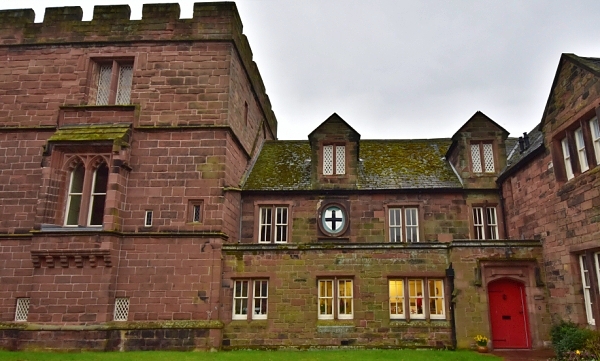 The Deanery with its Pele Tower © essentially-england.com
The Deanery with its Pele Tower © essentially-england.comDiscover Carlisle Cathedral
We visited in the spring, and were glad for the chance to get out of the rain - though the cathedral proved to be more than a quick diversion. Athelwold, the first prior, started the building of the monastic church started in 1122. He went on to become the first Bishop of Carlisle in 1133 when the church gained cathedral status, a position he held for 22 years.
This wasn’t the only monastic site in Carlisle, as about one hundred years later Carlisle’s monastic community was extended by the building of Dominican and Franciscan Friaries.
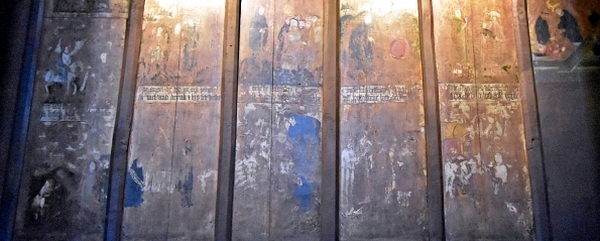 Medieval Painting Depicting the Legend of St. Cuthbert © essentially-england.com
Medieval Painting Depicting the Legend of St. Cuthbert © essentially-england.comDuring the late twelfth and thirteenth centuries the architecture of the cathedral was significantly modified and the early Norman style changed to an English Gothic style. The modifications also included the stunning east window which is the largest and most complex window of this style in England.
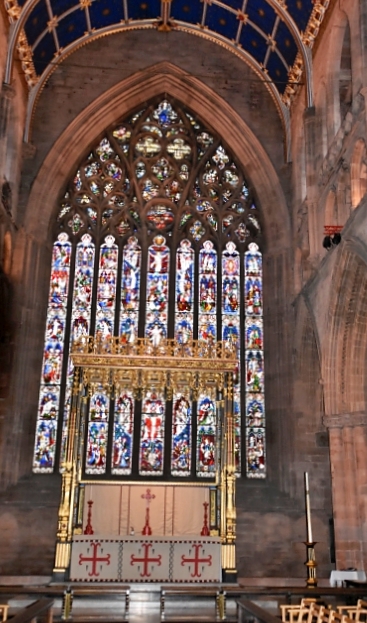 The Altar and East Window The Altar and East Window © essentially-england.com |
The main entrance is in the south transept and you almost immediately walk to the crossing. In the tower above your head hangs a ring of thirteen bells. Unusually, the screening around the organ
appears to hide the rest of the cathedral and makes the west end feel small and
dark. The organ was built in 1856 and has had a couple of re-builds since. We arrived during choir practice, and exploring a cathedral while organ and choir provide the backdrop is simply magical.
The nave is the earliest part of the
cathedral and of Norman architecture. It is now the Regimental
Chapel of the Duke of Lancaster’s Regiment. Over the years, stone from the
cathedral site has been used to repair or strengthen Carlisle Castle.
It is reported that during the Civil War the Scottish army took stone from the
nave for the castle. Just to the side of the nave is the treasury. This was opened in 1990 and during construction they had to dig through some of the foundations. Part of these foundations can now be seen through a window as you enter. The treasury displays some of the diocese treasures. There is also an exhibition on how Christianity developed in Cumbria. |
The north transept is St. Wilfred’s Chapel, where the early sixteenth century Brougham Triptych is displayed behind the altar. This altar piece is typical of early Northern European carvings and bears the trademark of the Antwerp guild of wood carvers.
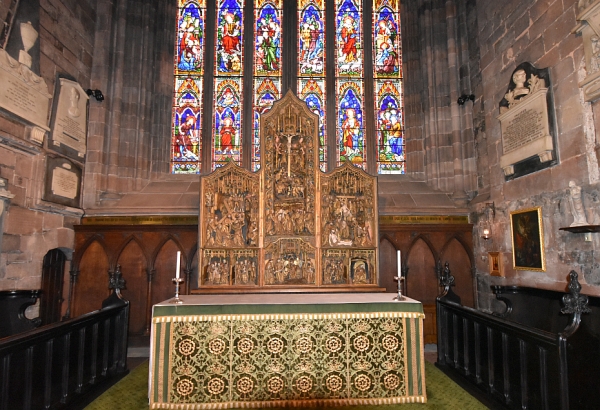 The St. Wilfred's Chapel and Altar with The Brougham Triptych © essentially-england.com
The St. Wilfred's Chapel and Altar with The Brougham Triptych © essentially-england.comPassing from the crossing through the screen and into the choir you will be taken by the grand view towards the large east window. The choir is very gothic in style and has a set of elegant wooden stalls with misericords that were to stop the monks falling asleep during services. There is also the bishop’s throne from 1880 and a fine pulpit that was made in 1559 for the Church of St. Andrew in Antwerp. Just behind the pulpit is the Salkeld Screen, which takes its name from the last prior, Lancelot Salkeld, who became dean in 1541.
But it’s the beautiful choir ceiling that will draw your attention. The wooden, barrel-shaped roof over the choir is from the fourteenth century and its fine decorative style that survives today was created in 1856, as part of the last recorded restoration between 1853 and 1870. It was last re-painted in 1970.
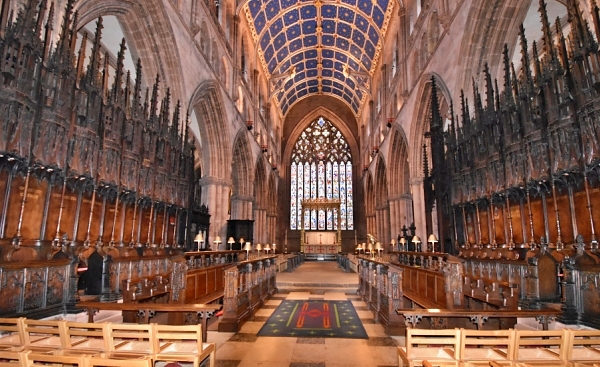 The Gothic Styled Choir of Carlisle Cathedral © essentially-england.com
The Gothic Styled Choir of Carlisle Cathedral © essentially-england.comThe east window is one of the highlights of the cathedral. It has some very good fourteenth century tracery which in the top of the window holds some original glass. The lower part of the window was created in 1861.
On the backs of the choir stalls you can find paintings dating from the fifteenth century. These wonderful medieval paintings are of saints and the 12 apostles.
If you would like more information on Carlisle Cathedral opening times, daily services, and events please visit their website.
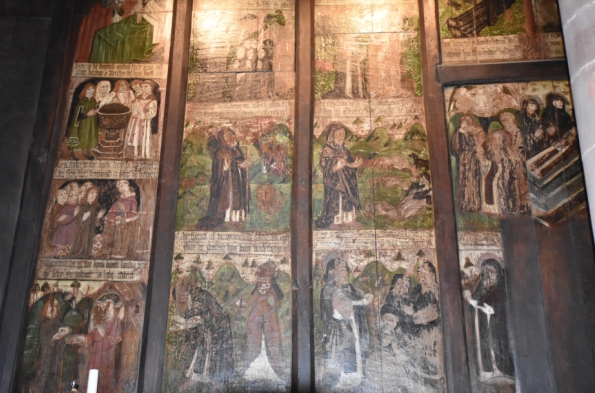 Medieval Screen Painting from Carlisle Cathedral © essentially-england.com
Medieval Screen Painting from Carlisle Cathedral © essentially-england.comHoliday Cottages Around Carlisle
Or you could use Booking.com to search for accommodation.
If you have enjoyed exploring Carlisle Cathedral as much as we did, why not return to our tour of Carlisle here and discover more of its dramatic history, or visit our Carlisle Castle page.
Or you can return to our homepage to read more on visiting England.
